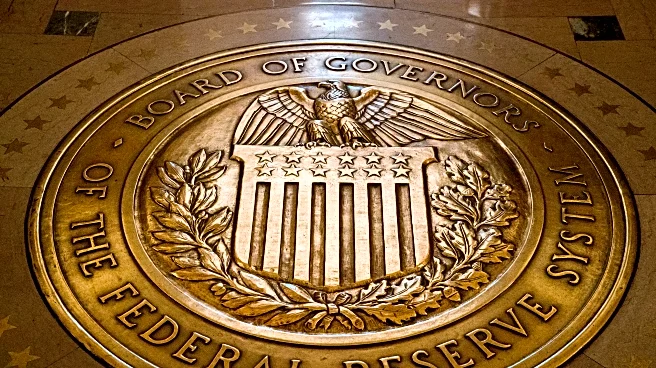What's Happening?
New York Federal Reserve President John Williams has indicated that a gradual reduction in short-term borrowing costs is appropriate if the economy aligns with his forecast of modest unemployment gains and easing inflation trends. Williams noted that the current monetary policy is 'modestly restrictive' but suitable given the economic conditions. He emphasized the need to balance the impact of President Trump's tariffs, which are expected to increase inflation by 1.0% to 1.5% this year. The Personal Consumption Expenditures Price Index is projected to be between 3% and 3.25% this year, decreasing to 2.5% next year and reaching the 2% target by 2027.
Why It's Important?
The potential rate cuts could have significant implications for the U.S. economy, particularly in terms of employment and inflation. Lower borrowing costs may stimulate economic activity and support the job market, which has shown signs of cooling. However, the tariffs imposed by President Trump could exacerbate inflationary pressures, complicating the Fed's efforts to maintain economic stability. The Fed's decision-making process is crucial as it navigates these challenges, impacting businesses, consumers, and the broader economic landscape.
What's Next?
The Federal Reserve is expected to cut its benchmark interest rate by a quarter of a percentage point at the upcoming policy meeting on September 16-17. This decision will be influenced by the release of the U.S. employment report for August, which could either support or challenge the need for a rate cut. The Fed's actions will be closely monitored by financial markets and analysts, as they assess the balance of risks to employment and inflation.













